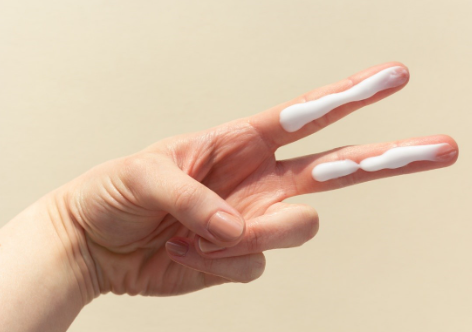
It’s Not Too Late to Save Your Skin and Quite Possibly Your Life!
Every year at this time almost everyone who writes about health writes about sunscreen. As we celebrate summer’s unofficial start, we are most likely to be doing it outside. By now, we all know how important it is to slather on sunscreen before heading outdoors, but did you know that it’s equally important to apply SPF even when you’re indoors? Or that most of us are not regularly applying enough sunscreen to slow skin aging and to prevent skin cancer? Not to worry, we’ve got all the information you need, and myths you need to forget, to help you stay safe in the sun this summer.
The American Cancer Society estimates about 100,000 new cases of melanoma will be diagnosed in 2024 and expects about 8,000 of those people to die of the disease. The good news is that skin cancer is highly preventable. Almost all melanoma and nonmelanoma skin cancers are associated with exposure to ultraviolet (UV) radiation from the sun, which can be blocked by wearing, and reapplying, sunscreen with an SPF of at least 30.
Understanding UV Rays
UV rays are emitted by the sun and can cause damage to your skin. There are two primary forms of UV rays: UVB and UVA.
UVB rays are responsible for the sunburn we can see and feel, while UVA rays penetrate deeper, contributing to premature aging. Both increase our risk for skin cancer. This is why it’s essential to look for sunscreen labeled as “broad-spectrum,” because these are specially formulated to protect you against both UVA and UVB rays.
UVA rays, unlike UVB rays, can penetrate glass as well as skin. So, if you spend time sitting near a window or in a room with sunlight streaming in, you can easily be exposed to UVA rays, especially at certain times of the day. Because of this, dermatologists recommend that you wear sunscreen even if you spend most of your day inside. Also, it’s easy to discount sun exposure from running errands, taking a walk, or sitting outside on the deck, and all of this incidental sun exposure adds up and can cause both skin damage and skin cancer. Consider applying sunscreen to your face, neck, ears, and back of your hands every morning, so you’re covered no matter where you are during daylight hours.
The Magic SPF Number
SPF stands for Sun Protection Factor, and it indicates a sunscreen’s effectiveness against UVB rays, or those that cause sunburn. SPF doesn’t have anything to do with how long you can stay in the sun. Sunscreen should be reapplied every two hours, regardless of its SPF, and immediately after swimming, sweating, or towel-drying.
According to the American Academy of Dermatology, the magic SPF number is 30. Why? Because it’s clinically proven to block around 97% of UVB rays. While sunscreens with higher SPF do offer slightly more UVB protection, it’s important to note that no sunscreen can provide 100% protection.
And here’s the catch: many of us fall short in applying the recommended amount of sunscreen initially and then often forget to reapply. This means the SPF gets diluted, so starting with a sunscreen with SPF of 30 is only adequate if you make sure to apply it generously and remember to reapply every 2 hours.
And remember, sun protection extends beyond sunscreen alone. Your clothing and accessories can serve as an additional defense against harmful UV rays. Opt for clothing that covers exposed skin, a wide-brimmed hat, and sunglasses to shield your eyes and delicate facial skin. Together, these measures offer comprehensive protection against sunburn, premature aging, and the risk of skin cancer.
The Two Main Type of Sunscreen
Chemical Sunscreens
Chemical sunscreens absorb UV rays and convert them into heat, which is then released from the skin. They contain organic (carbon-based) compounds, such as avobenzone and oxybenzone, that create a chemical reaction on the skin to neutralize and minimize the damaging effects of UV radiation.
Pros: Lighter texture and higher SPF values, allowing for stronger protection against UVB rays.
Cons: Individuals with sensitive skin may experience skin irritation or allergic reactions. Chemical sunscreens also need time to absorb and become effective, and most recommend application around 15-30 minutes before sun exposure.
Physical (Mineral) Sunscreens
Physical sunscreens create a physical barrier on the skin’s surface that reflects and scatters UV rays. They contain mineral ingredients like zinc oxide (remember the white noses in old beach films?) and titanium dioxide, which sits on top of the skin and acts as a shield against both UVA and UVB rays.
Pros: Whether it’s the controversial ingredient list of chemical sunscreens or how they could be harming the world’s coral reefs, dermatologists all seem to agree that mineral sunscreen is your best bet for broad-spectrum protection. Mineral sunscreens protect against both UVA and UVB rays and are less likely to cause skin irritation.
Cons: Some physical sunscreens may leave a white cast on the skin, which can be more noticeable on darker skin tones. However, newer formulations often use micronized or nano-sized particles to reduce this effect. Physical sunscreens also tend to have a thicker texture, which can feel heavier on the skin compared to chemical sunscreens.
Three Key Steps to Consistent Sun Protection
Apply the appropriate amount of sunscreen to start.
- Follow the “two-finger” rule for your face and neck. Dispense sunscreen along the length of your pointer and middle fingers, then apply this amount to your face, neck, and ears. There really is no harm in applying extra sunscreen, so if you are not sure that you are adequately protected, just apply some more. If you’re worried about looking greasy, look for oil-free formulas and those with a matte finish.
- Apply at least a shot glass full of sunscreen to your body. Dermatologists say the right amount of sunscreen for someone in a swimsuit is one ounce, which is about a shot glass full.

Reapply every couple of hours.
- The #1 thing to remember about sunscreen is this: It isn’t a one-and-done deal. The effectiveness diminishes over time, especially when exposed to water, sweat, or prolonged sun exposure. No sunscreen is waterproof or sweatproof, and while some sunscreens may be labeled as water-resistant, they still require reapplication after swimming, sweating, or towel-drying, otherwise you are not protected from sunburn and sun damage.
- Reapplication is necessary to maintain optimal protection from the sun. It is recommended that sunscreen be reapplied every two hours or immediately after swimming, sweating, or toweling off. Recent research shows that the active ingredients in sunscreen can degrade in the heat.
Remember your commonly forgotten and neglected skin
- Two commonly forgotten areas of skin that burn frequently. The tops of your feet and the tops of your ears. And, if you don’t have much hair, or wear a hairstyle that exposes the scalp, like box braids or a sleek bun with a part, experts recommend applying sunscreen to your head as well. Many products exist for this purpose, including hair mist, oil, or powder with SPF, some of which come with a spray nozzle for easy application before styling. Other commonly missed areas include your lips and eyelids. The skin around the eyes is more fragile and thinner, making it more susceptible to fine lines and photoaging, so remembering to apply sunscreen is essential. Experts recommend using a lip balm with SPF, but a special sunscreen for your eyelids is not necessary. Be cautious when applying sunscreen around your eyes, as it can run into your eyes when you sweat. If this happens frequently, it is even more important to wear sunglasses at all times when you are outside.
Spray Sunscreen or Lotion Sunscreen?
Both spray and lotion sunscreens can be effective when used correctly, but there are some things to keep in mind:
- Coverage: Spray sunscreens can be convenient for hard-to-reach areas or for quick reapplication. However, it can be challenging to ensure complete coverage, especially if it’s windy or if you’re not applying enough. With lotion sunscreen, you have more control over the amount applied and can ensure better coverage, especially on uneven or sensitive areas.
- Application: With spray sunscreen, it’s essential to hold the can close to your skin and apply it generously, making multiple passes to ensure even coverage. Be careful not to inhale the spray or get it in your eyes. With lotion sunscreen, you can apply it directly to the skin and massage it thoroughly, which can help ensure better absorption.
- Effectiveness: Studies suggest that people tend to underapply spray sunscreen, leading to lower levels of protection compared to lotion sunscreen. Additionally, spray sunscreen can be more easily rubbed or washed off, reducing its effectiveness over time.
5 Myths about Sunscreen – Busted
We’d like to clear up some misconceptions and give you reliable information you can trust so you can make smart choices about protecting your skin from the sun.
Myth 1: ”I don’t need sunscreen on a cloudy day.”
Accurate Information: Clouds do not block UV rays completely. UV rays can penetrate through clouds, leading to sunburn and skin damage. It is important to wear sunscreen, even on cloudy days, to protect your skin. Also, despite the fact that sunscreen isn’t well-promoted during the winter months, it absolutely should be used year-round, regardless of the season or location.
Myth 2: ”I don’t need sunscreen if I have darker skin.”
Accurate Information: While darker skin tones have more natural protection against UV rays compared to lighter skin tones, everyone, regardless of their skin tone, is susceptible to sun damage. Sunscreen is still essential for people with darker skin to protect against skin cancer, premature aging, and other harmful effects of UV exposure.
Myth 3: “My makeup has SPF, so I don’t need to apply sunscreen.”
Accurate Information: If a makeup product claims a SPF value (and has a drug fact label) then it is a sunscreen and has gone through the testing and regulatory guidelines to categorize it as such. However, according to experts, makeup products are often applied too thinly to provide real protection from the SPF in the product. There are not too many women who say they apply two fingers worth of foundation or tinted moisturizer. Applying your makeup with SPF over regular sunscreen is a great idea!
The Bottom Line on Sunscreen:
Sunshine and fresh air are two of the best free medicines. You can get all the benefits without risking your health or youthful good looks by upping your sun-protection game:
- Choose a sunscreen with SPF of at least 30 that has a consistency you will reapply often.
- Apply at least a shot glass full of sunscreen (one ounce) to your body and use the two-finger rule for your face, neck, and ears: dispense sunscreen along the length of your pointer and middle fingers, then apply this amount to the areas above your shoulders.
- Reapply sunscreen every two hours, or immediately after swimming, sweating, or toweling off.
- If you’re out between 10a and 2p, wear a hat or take some shade breaks. And don’t forget your sunglasses.